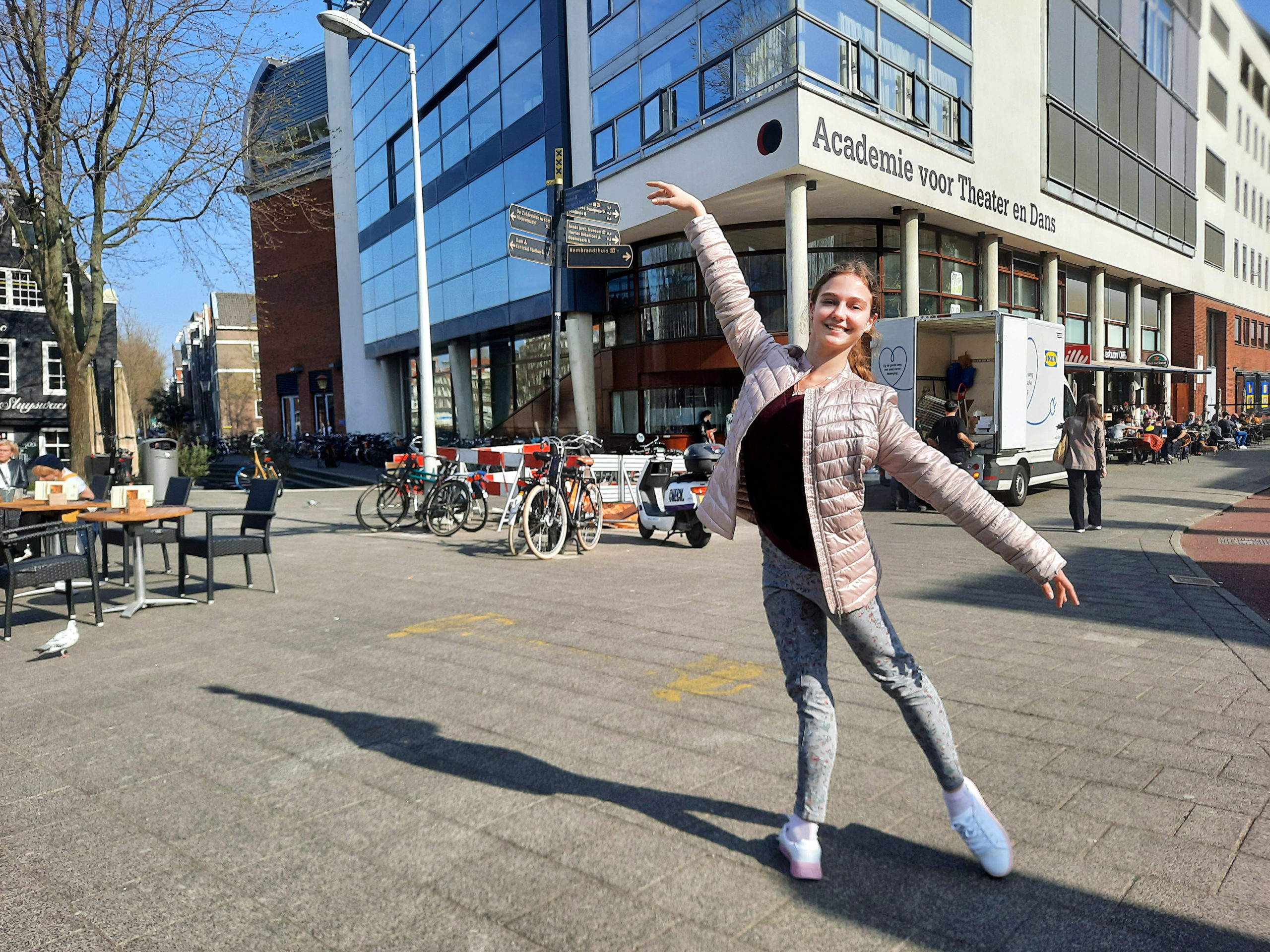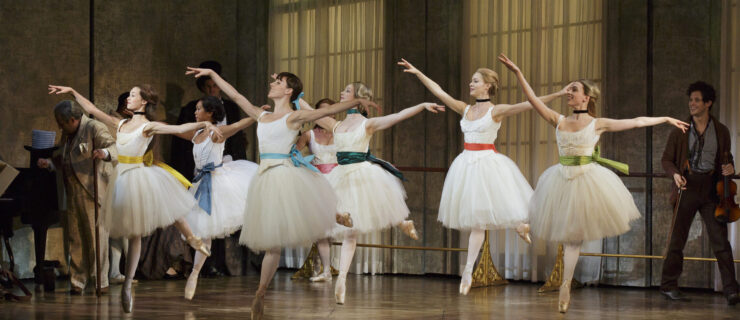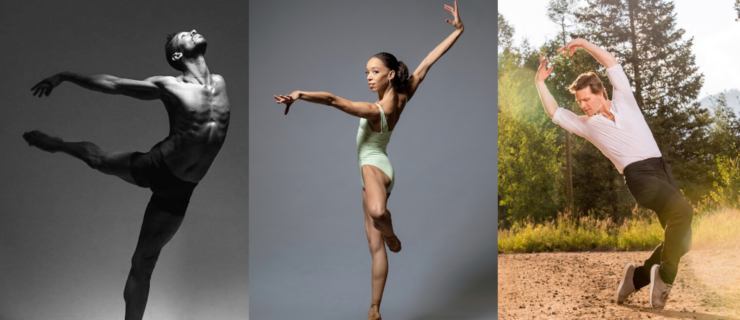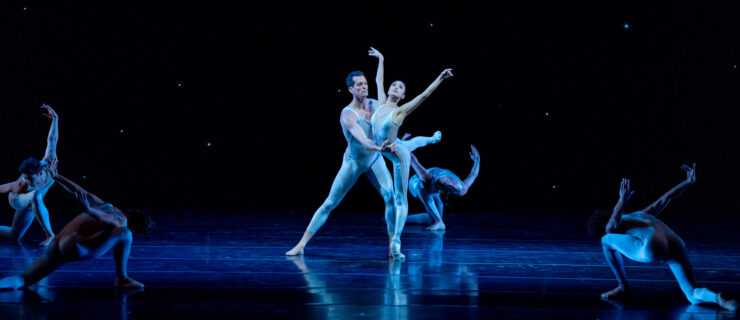YAGP Helps to Find New Dance Homes for Ukrainian Ballet Students
The first day of class at a new ballet schoolis always intimidating; when Polina Chepyk, 17, arrived at the Dutch National Ballet Academy in March, she did what many do. She looked for an open spot at the barre and sized up her classmates. As class went on, she was impressed by how many pirouettes the girls could do.
“I thought I was a good turner until I came here,” joked Chepyk after her first day. “I’m looking at the girls like, ‘Oh my god!’”
For a minute, the excitement and technical displays took her mind off of her family facing war back in Kyiv and the long, lonely and fraught journey she took to get to Amsterdam.
“I’m proud to represent Kyiv and my school here,” says Chepyk, who was placed at Dutch National’s academy with help from Youth America Grand Prix. “But it’s hard not to think of my family back in Ukraine and worry if they’re safe.”
Since Russia invaded Ukraine on February 24, ballet classes in the country have mostly ground to a halt, leaving students in crucial training years without a way to take class—on top of fearing for their lives.
YAGP was supposed to hold its first event in Ukraine last month, an event originally planned for March 2020, but the war forced its postponement. When Russia invaded Ukraine, YAGP staff began contacting schools across Europe to find new training homes for Ukrainian dancers.
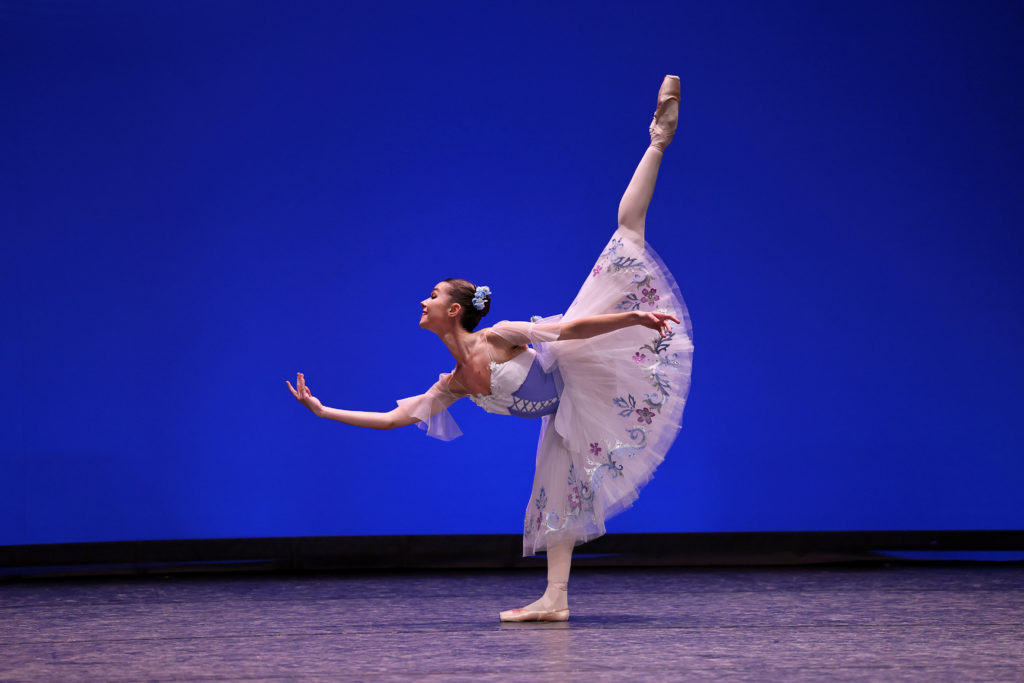
Larissa Saveliev, YAGP’s artistic director, said they have placed over 100 students in schools across Europe and a few in the U.S. The schools include Munich International Ballet School, Stuttgart Ballet’s John Cranko School, Dutch National Ballet Academy, European School of Ballet in the Netherlands, Norwegian National Ballet School, the Ballet School of Teatro alla Scala and Ballettschule Theater Basel.
Finding academies willing to take Ukrainian students, and foreign students studying in Russia who also had to quickly leave, wasn’t too challenging. Saveliev says many were eager to help. Getting students there and finding places for them to live was harder, especially with dancers as young as 9 looking for assistance.
“At the start of the war, it was moving so fast. We were working around the clock,” says Saveliev. “We’d contact kids who were leaving their houses, and we had until they got to the border to find somewhere for them to go.” At first, some were reluctant to leave, thinking the war would not last long, but Saveliev was soon flooded with requests. YAGP, which has set up a hotline and donation portal, is still working with some students on placement, but most have now been placed—and most schools are full, with some taking as many as 15 dancers.
A Harrowing Journey
Deciding whether to stay or flee the war is not easy. Leaving means safety and the opportunity to continue training, but also separating from family facing an uncertain fate. Most men between ages 18 and 60 are not allowed to leave Ukraine at the moment, forcing mothers and other family members to choose between staying with their spouses or leaving with their children.
In Chepyk’s case, her family hoped the war would end and they would not have to make a hard choice. But after three weeks, they decided she would leave alone, fearing her mother would not be able to return to her husband and youngest daughter in Kyiv. In March she took a 12-hour train ride from Kyiv to Lviv at night and with lights off in an effort to evade shelling and bombs. In Lviv, she met a friend and managed to fit in a ballet class with people from all over Ukraine, who had stopped there on their way out of the country. It was a rare safe place at the time.
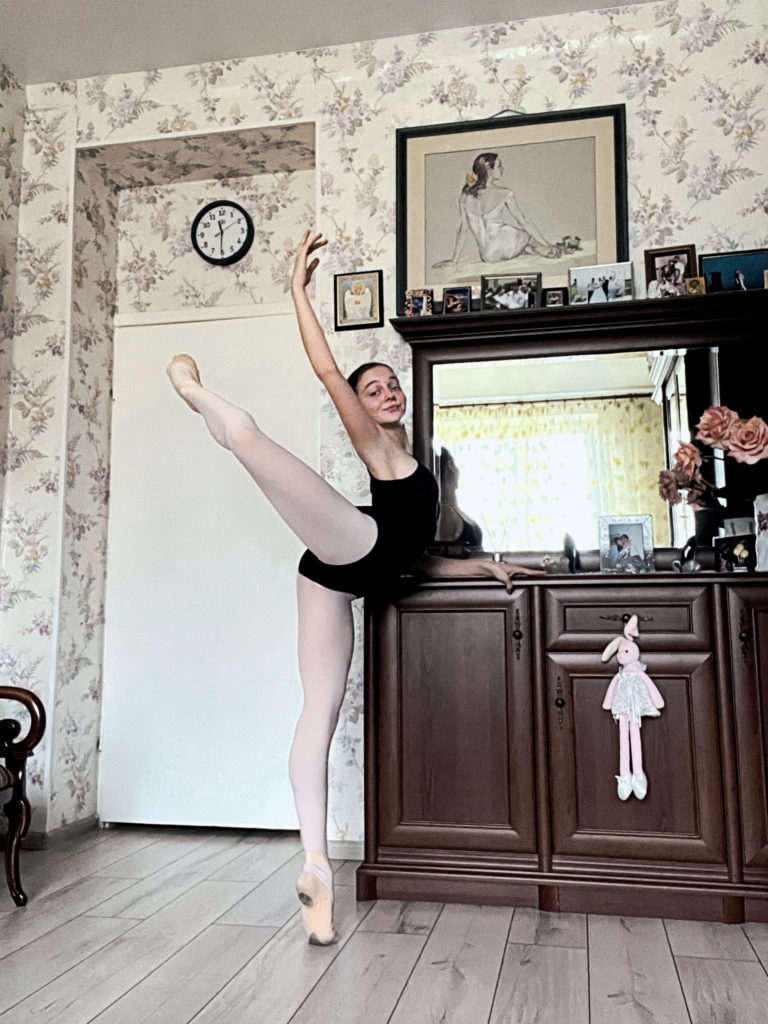
The next morning, she took another long journey—14 hours on a bus to Berlin, again on her own. A family friend picked her up and put her on a train to Amsterdam, where she finally met her host family and, after three weeks of sheltering in place in her Kyiv home, began classes again.
“The teachers were so nice, they just told me to take a deep breath and not to worry,” she says. “I was safe now.”
Chepyk’s positive experience integrating into the school is shared by the other students from Ukraine that the academy has welcomed, according to academy artistic director Ernst Meisner.
“What they’ve been through is unimaginable, but dance is a refuge for them,” he says. “After a recent school performance, one of the boys told me it was the first time he felt safe and could forget everything.”
Fleeing Without a Plan
As arduous as Chepik’s journey was, she at least knew where she was headed. Students who left soon after the war broke out faced a more chaotic scene.
Diana Yefimenko, 18, went to bed planning to go to ballet class as usual in the morning, but the sound of bombs woke her up, signaling the start of the war. Her family got in their car and started driving out of Kyiv, not knowing where to go. Yefimenko took just one small suitcase that she had packed quickly, with no room for ballet clothes or pointe shoes. After a full day in the car navigating traffic backed up for miles, the family found friends to stay with.
“We hoped it would be okay outside of the city, but rockets, planes and air raids were constant. We’d spend hours in a shelter during cold nights,” Yefimenko says. “After a week, my father drove my mom and me 16 hours to the border with Moldova. It was so hard. We stood there just hugging until we said goodbye.”
As she traveled on the 30-hour bus ride with her mother to her aunt’s house in the Czech Republic, Yefimenko was emailing with YAGP to try and find a school to take her. Having won first place in the classical category at YAGP in Barcelona in December—wowing the crowd with her Medora variation from Le Corsaire—she had already been talking with the Cranko School about attending in September. With YAGP’s help, she got off the bus and hitched a ride with her uncle to Stuttgart.
The school found her a room in its dorms and supplied her with leotards, tights, pointe shoes and street clothes. She spent five days in COVID quarantine, which felt like a vacation after what she’d been through.
When it was time to dance, a new challenge began. Not only was Yefimenko out of shape, but the style of training was not what she was used to.
“The tempos are very different, and the combinations, too. The teachers are very picky, looking at every detail,” she says. “They took a lot of care with turnout, placement of knees and arches. I really appreciate it, but it’s challenging.”
Her new classmates provide motivation and inspiration. “It’s exciting to see dancers with such pure technique,” she says. “I look at them and understand what I should do to improve myself.”
Hope for the Future
Saveliev says that none of the dancers were required to audition, and schools committed to keeping the dancers through this school year. What happens next year is uncertain—hopefully students can return to Ukraine, but if not, some schools may have to make adjustments to their class rosters. Saveliev, who herself has family in Russia and Ukraine, says YAGP is committed to continuing to help students.
“There was no memo on how to deal with this situation. We tried to send students to schools that were the best match, to avoid a situation later where they’re told they can’t stay,” says Saveliev. “But we’re here to help the kids, so if that happens we will be there.”
Chepyk and Yefimenko both say the opportunity to continue training is invaluable, and they’re enjoying the exposure to new teachers and to students from all over the world. Despite the war, their love of dance has not wavered.
“My dream is to dance Juliet one day,” says Yefimenko. “And to go back to Ukraine.”
